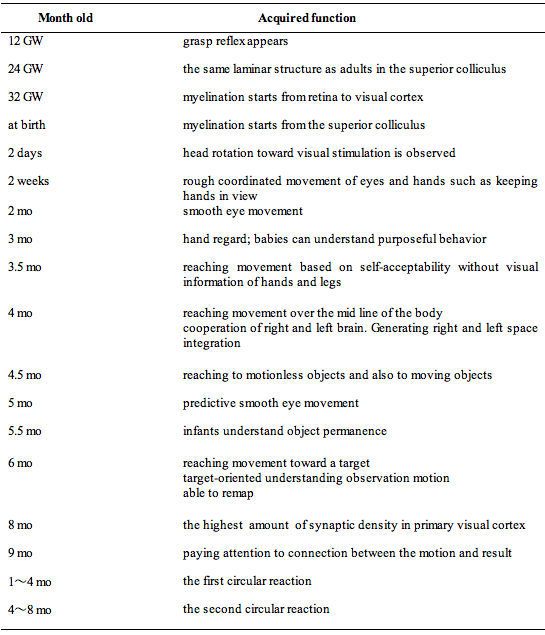Towards a Theory of Cognitive Development
The SI-mechanism group has promoted scientific analysis of cognitive development fundamentals, conducting behavioral experiments and brain imaging studies with fMRI on healthy volunteers and individuals with communication disorders. Fig. 1 shows the results of mapping the activation for each function onto the brain surface. The functions include body schema, which is an important function in cognitive development, object permanence, reach-to-grasp movement and the selection of targets, based on the imaging study discussed in (i) and (ii). Broadly speaking, it is clear that development starts from the primary sensory cortex, and therefore proceeds from the posterior to anterior part of the brain. Also, these results exhibited a relationship with the development of myelination and the process of synaptogenesis.
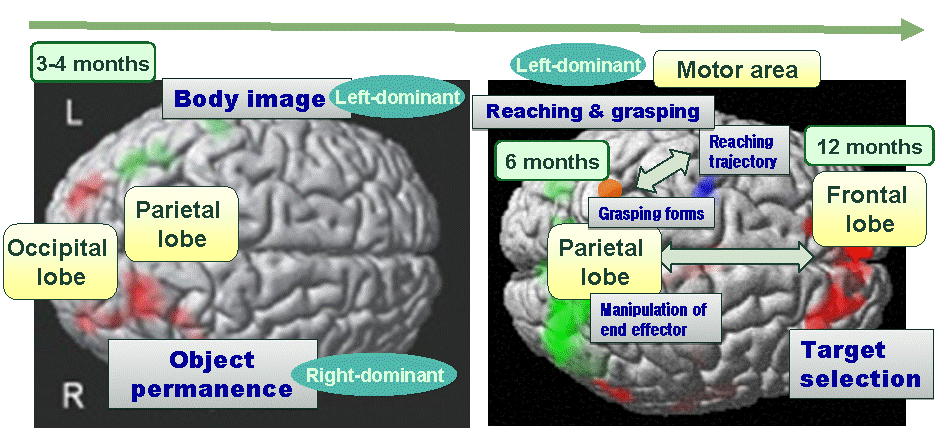
Fig. 1 Cognitive development and related cortical regions during the first year of life.
As we stated earlier, we proposed a reach-to-grasp movement model [Takemura2009a in Japanese] [Takemura2009b in Japanese]. Infants begin to reach to touch visual stimuli in the second week of life. At 2.6 weeks infants tend to bring their hands into their visual field. They begin to recognize their own hands at the age of two months, and understand they can directly touch objects by reaching only after three months. Mutual grasping, which is taking hold of one hand with the other hand in the midline of the body, is seen. Grasping objects is common at four months, and infants grasp objects with differentiated hand shape or grip configuration depending on the objects’ shape. At seven months, infants differentially orient their hands relative to the object’s orientation (eg. wrist rotation). We primarily investigated detailed development data on hand exercise, and consider that the superior colliculus, which controls eye and hand movement, as seen in Table. 1, have an important role in the early phase of learning [Inui2010a in Japanese].
Table 1 Function acquired at each month of age. [Inui2010a in Japanese]
At the same time of this period, preshaping is possible by successfully learning object shapes through numerous grip experiences. As we mentioned earlier in the paragraph, a previous study showed that seven month old babies are capable of developing preshaping without visual information. This fact shows forward model toward wrist rotation and grip aperture is learned. We are now modeling this developmental process based on the framework shown in Fig 2. In addition, we showed that the process of iterative learning, which is called circular reaction, is very important in the acquisition of significant basic functions for cognitive development [Inui2010a in Japanese].
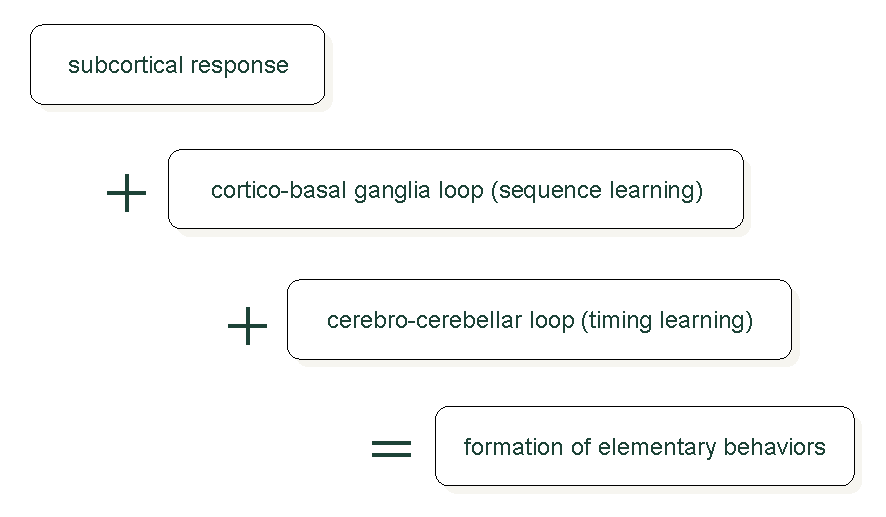
Fig. 2 Conceptual diagram for formation of elementary behaviors.
We organized the phenomena on cognitive development and discussed the fundamentally important mechanisms. Several main points are stated below.
- Fundamental and significant learning, including cognitive acquisition acquired at an earlier phase, is based on the first and second circular reactions which occur between the first and eighth months of life.
- We suggest that the circular reaction is caused by the hyper release of dopamine or a high sensitivity to dopamine.
- We can explain that circular reaction tends to repeat the same behavior due to the hyper release of dopamine or a high sensitivity to dopamine.
- It is believed that the cerebro-cerebellar system influences the timing control (unconsciously) of exercise automatization of motor behavior and skills, while the basal ganglia is involved in the judgment of temporal behavior control (rhythmically) and conscious time perception is related to interval timing between behaviors.
Inui, Nagai, and Ogawa (2010) showed the existence of structural and functional abnormalities of brain regions, and abnormal connections between brain areas in individuals with autism and Williams syndrome (WS), as shown in Fig. 3. In the figures, the regions shown in the gray boxes have structural abnormalities. Whereas, the regions in gray hatched boxes have functional abnormalities. Structural abnormalities mean a reduction in the volume of gray matter, a reduction in cell size or an increase in cell density. The arrows in the figure express connections between regions confirmed by the previous method. Solid arrows indicate the intact connections and dashed arrows show significantly weaker connections in the disorder groups compared with the control group. There are several regions in the large-scale network, as shown in Fig. 3, which exhibit functional abnormalities such as hypoactivation without structural abnormalities. These abnormalities are in the right temporo-parietal junction in autism and in the hippocampus, amygdala and intraparietal sulcus in WS. Although most brain regions shown in the figures exist in higher-order association cortex, we hypothesized that the abnormality in higher-order brain loci results from an abnormality in the limbic cortex. In other words, deficits of higher order association areas are a secondary disorder caused by few or no appropriate inputs from the limbic cortex, such as from the amygdala and hippocampus, due to abnormalities of the structures and functions. Thus, it is considered that in autism and Williams syndrome, higher order cognitive functions do not work properly because of abnormalities in the limbic system caused at an early development phase. Details are given in Inui, Nagai and Ogawa (2010).
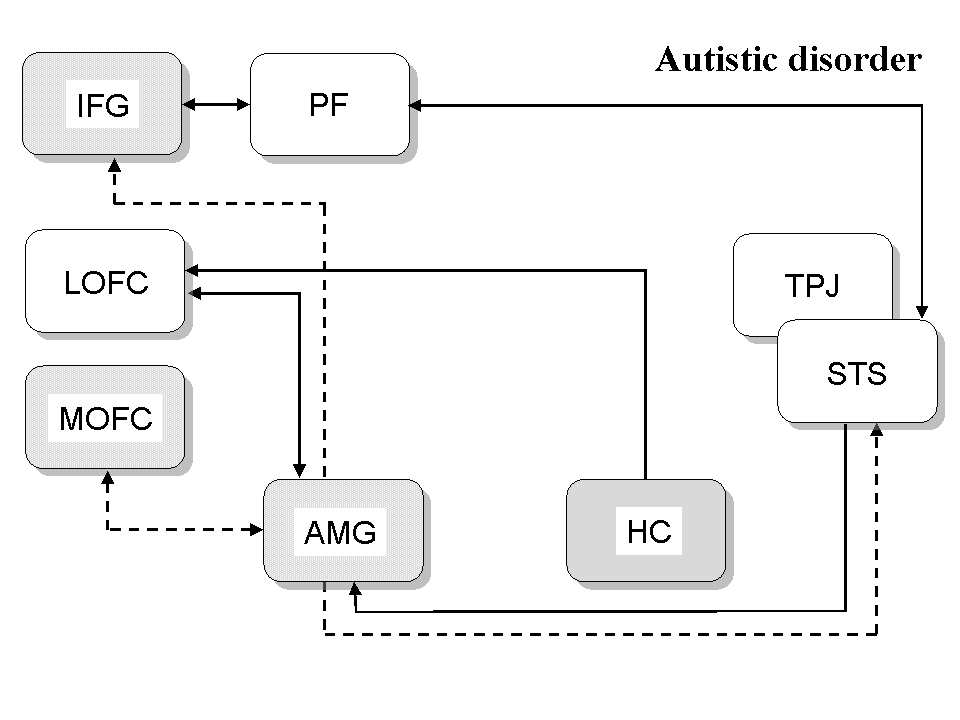
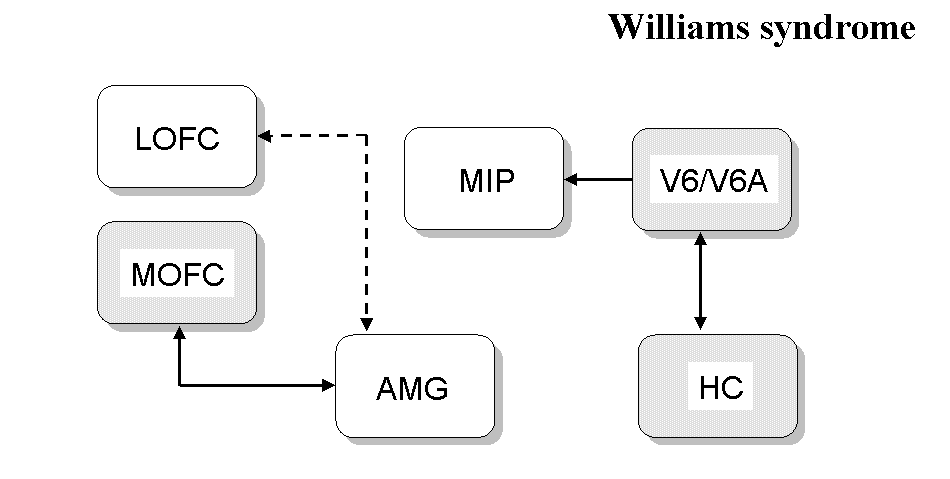 Fig. 3 Structural and/or functional abnoromalities, and abnormal connections between cortical and subcortical regions in autism and Williams syndrome.
Fig. 3 Structural and/or functional abnoromalities, and abnormal connections between cortical and subcortical regions in autism and Williams syndrome.
HC: hippocampus; AMG: amygdala. Revised from Inui, Nagai, and Ogawa (2010, in Japanese).

